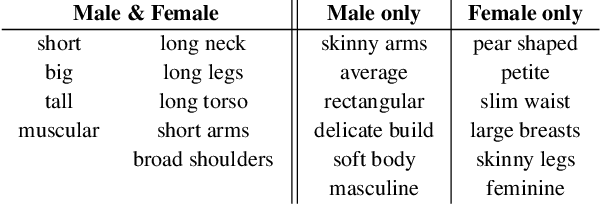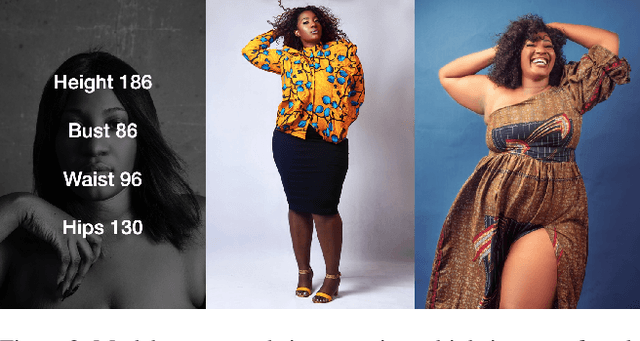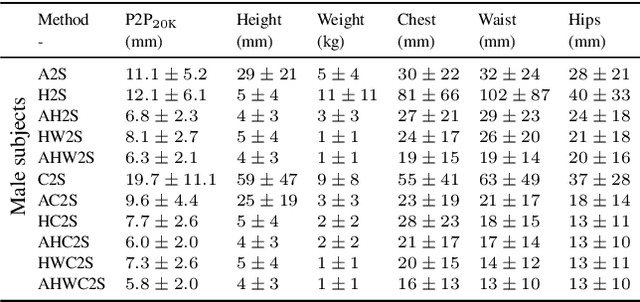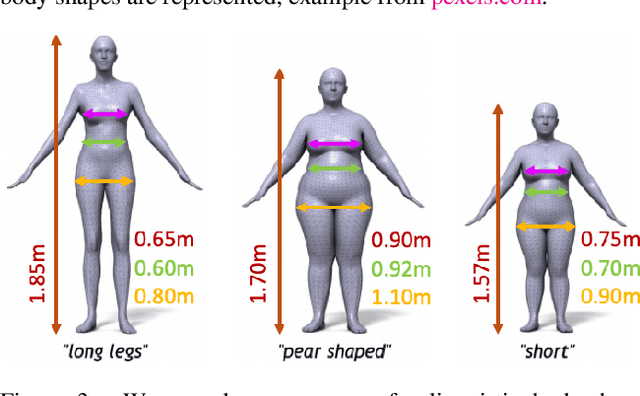Accurate 3D Body Shape Regression using Metric and Semantic Attributes
Paper and Code
Jun 14, 2022



While methods that regress 3D human meshes from images have progressed rapidly, the estimated body shapes often do not capture the true human shape. This is problematic since, for many applications, accurate body shape is as important as pose. The key reason that body shape accuracy lags pose accuracy is the lack of data. While humans can label 2D joints, and these constrain 3D pose, it is not so easy to "label" 3D body shape. Since paired data with images and 3D body shape are rare, we exploit two sources of information: (1) we collect internet images of diverse "fashion" models together with a small set of anthropometric measurements; (2) we collect linguistic shape attributes for a wide range of 3D body meshes and the model images. Taken together, these datasets provide sufficient constraints to infer dense 3D shape. We exploit the anthropometric measurements and linguistic shape attributes in several novel ways to train a neural network, called SHAPY, that regresses 3D human pose and shape from an RGB image. We evaluate SHAPY on public benchmarks, but note that they either lack significant body shape variation, ground-truth shape, or clothing variation. Thus, we collect a new dataset for evaluating 3D human shape estimation, called HBW, containing photos of "Human Bodies in the Wild" for which we have ground-truth 3D body scans. On this new benchmark, SHAPY significantly outperforms state-of-the-art methods on the task of 3D body shape estimation. This is the first demonstration that 3D body shape regression from images can be trained from easy-to-obtain anthropometric measurements and linguistic shape attributes. Our model and data are available at: shapy.is.tue.mpg.de
 Add to Chrome
Add to Chrome Add to Firefox
Add to Firefox Add to Edge
Add to Edge